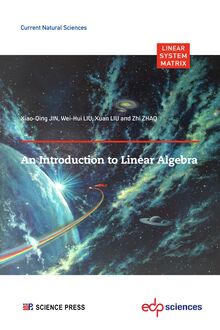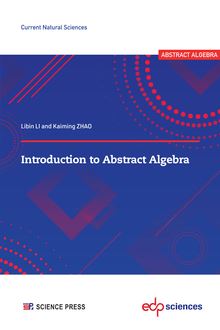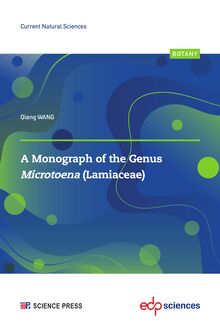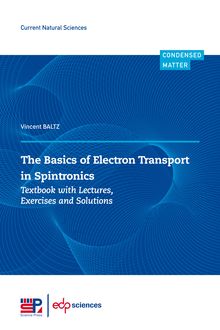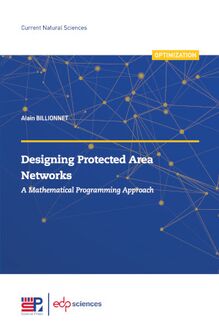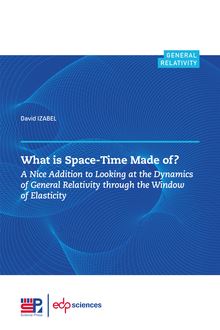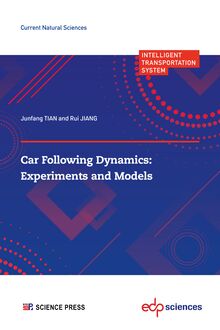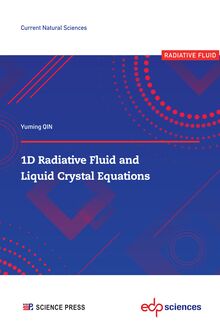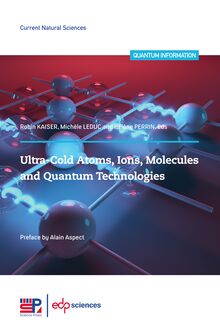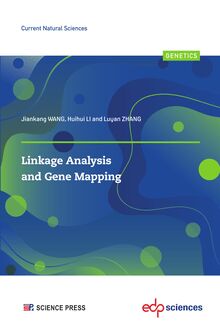What is Space-Time Made of ? , livre ebook
366
pages
English
Ebooks
2021
Obtenez un accès à la bibliothèque pour le consulter en ligne En savoir plus
Découvre YouScribe en t'inscrivant gratuitement
Découvre YouScribe en t'inscrivant gratuitement
366
pages
English
Ebooks
2021
Obtenez un accès à la bibliothèque pour le consulter en ligne En savoir plus
Publié par
Date de parution
20 mai 2021
Nombre de lectures
1
EAN13
9782759825745
Langue
English
Poids de l'ouvrage
35 Mo
In the first part of this book, the author synthesizes the main results and formulas of physics–Albert Einstein’s, with general relativity, gravitational waves involving elastic deformable space-time, quantum field theory, Heisenberg’s principle, and Casimir’s force implying that a vacuum is not nothingness. In the second part, based on these scientific facts, the author re-studies the fundamental equation of general relativity in a weak gravitational field by unifying it with the theory of elasticity. He considers the Ligo and Virgo interferometers as strain gauges. It follows from this approach that the gravitational constant G, Einstein’s constant κ, can be expressed as a function of the physical, mechanical and elastic characteristics of space-time. He overlaps these results and in particular Young’s modulus of space-time, with publications obtained by renowned scientists. By imposing to satisfy the set of universal constants G, c, κ, ħ and by taking into account the vacuum data, he proposes a new quantum expression of G which is still compatible with existing serious publications. It appears that time becomes the lapse of time necessary to transmit information from one elastic sheet of space to another. Time also becomes elastic. Thus, space becomes an elastic material, with a particle size of the order of the Planck scale, a new deformable ether, therefore different from the non-existent luminiferous ether. Finally, in the third part, in appendices, the author demonstrates the fundamentals of general relativity, cosmology and the theory of elasticity
Contents
Preamble . . . . . . . . . . . . . . . . . . . . . . . . . . . . . . . . . . . . . . . . . . . . . . . . . . . . . . III
Symbology . . . . . . . . . . . . . . . . . . . . . . . . . . . . . . . . . . . . . . . . . . . . . . . . . . . . . XIII
Introduction. . . . . . . . . . . . . . . . . . . . . . . . . . . . . . . . . . . . . . . . . . . . . . . . . . . . XVII
CHAPTER 1
Where is Physics Today? – Synthetic Overview of the State of the Art of Physics Today . . . . . . . . . . . . . . . . . . . . . . . . . 1
1.1 Introduction . . . . . . . . . . . . . . . . . . . . . . . . . . . . . . . . . . . . . . . . . . . . 1
1.2 Newton’s Gravitation . . . . . . . . . . . . . . . . . . . . . . . . . . . . . . . . . . . . . 2
1.3 Electromagnetism/GravitoElectroMagnetism. . . . . . . . . . . . . . . . . . . . 2
1.4 Special Relativity . . . . . . . . . . . . . . . . . . . . . . . . . . . . . . . . . . . . . . . . 5
1.5 General Relativity. . . . . . . . . . . . . . . . . . . . . . . . . . . . . . . . . . . . . . . . 8
1.6 Black Holes . . . . . . . . . . . . . . . . . . . . . . . . . . . . . . . . . . . . . . . . . . . . . 10
1.7 Gravitational Waves . . . . . . . . . . . . . . . . . . . . . . . . . . . . . . . . . . . . . . 12
1.8 Quantum Mechanics . . . . . . . . . . . . . . . . . . . . . . . . . . . . . . . . . . . . . . 13
1.9 Highlighting the Differences between the Two Pillars of Physics . . . . . 33
1.10 Nature Plays with Our Senses . . . . . . . . . . . . . . . . . . . . . . . . . . . . . . . 35
1.11 How to Reconcile the Two Physics . . . . . . . . . . . . . . . . . . . . . . . . . . . 37
CHAPTER 2
First Ask the Right Question . . . . . . . . . . . . . . . . . . . . . . . . . . . . . . . . . . . . 41
2.1 What is the State of the Art and the Issues that Arise from It? . . . . . 41
2.2 What is the Nature of Space-Time? . . . . . . . . . . . . . . . . . . . . . . . . . . 42
2.3 Can Einstein’s Equation be Reconstructed without Passing
through Newton’s Weak Field Limits? Without Using G? . . . . . . . . . . 42
2.4 What Brings Us Contemporary Data of the Vacuum? . . . . . . . . . . . . . 44
2.5 Space-Time as a Physical Object an Elastic Medium . . . . . . . . . . . . . . 45
CHAPTER 3
A Strange Analogy between S. Timoshenko’s Beam Theory and General Relativity . . . . . . . . . . . . . . . . . . . . 47
3.1 Introduction . . . . . . . . . . . . . . . . . . . . . . . . . . . . . . . . . . . . . . . . . . . . 47
3.2 Generalities on General Relativity . . . . . . . . . . . . . . . . . . . . . . . . . . . . 48
3.3 Analogy between Beam Theory and General Relativity from
the Point of View of the General Principle Curvature = K × Energy
Density . . . . . . . . . . . . . . . . . . . . . . . . . . . . . . . . . . . . . . . . . . . . . . . . 50
3.4 Analogy between the Definition of Curvature in Strength of Material
and General Relativity . . . . . . . . . . . . . . . . . . . . . . . . . . . . . . . . . . . . 54
3.5 Extension of Curvature to Other Strength of Material Solicitations . . . 57
3.6 Analysis of Einstein’s Equation Applied to the Entire Universe
(Case of Cosmology) . . . . . . . . . . . . . . . . . . . . . . . . . . . . . . . . . . . . . . 59
3.7 Conclusions. . . . . . . . . . . . . . . . . . . . . . . . . . . . . . . . . . . . . . . . . . . . . 63
CHAPTER 4
The Stress Energy Tensor in Theory of General Relativity and the Stress
Tensor in Elasticity Theory are Similar . . . . . . . . . . . . . . . . . . . . . . . . . . . . . 65
4.1 Definition of the Stress Energy Tensor in General Relativity . . . . . . . . 65
4.2 Definition of Stress Tensor in Elasticity Theory . . . . . . . . . . . . . . . . . . 66
4.3 Demonstration of the Correlation between the Stress Tensor and the Stress Energy Tensor . . . . . . . . . .. . . . . . . . . . . 66
CHAPTER 5
Relationship between the Metric Tensor and the Strain Tensor in Low Gravitational Field . . . . . . . . . . . . . . . . . . . . 71
5.1 Introduction . . . . . . . . . . . . . . . . . . . . . . . . . . . . . . . . . . . . . . . . . . . . 71
5.2 Definition of Strain Tensor . . . . . . . . . . . . . . . . . . . . . . . . . . . . . . . . . 71
5.3 Determination of the Link between the Metric and the Strain . . . . . . . 73
CHAPTER 6
Relationship between the Stress Tensor and the Strain Tensor in Elasticity
(K) and between the Curvature and the Stress Energy Tensor (κ) in General Relativity in Weak Gravitational Fields . .. . . . . . . . 79
6.1 Reminder of Results . . . . . . . . . . . . . . . . . . . . . . . . . . . . . . . . . . . . . . 80
6.2 Some Reminders about the Elasticity Theory . . . . . . . . . . . . . . . . . . . 80
6.3 Highlighting the Parallelism between Elasticity Theory and General Relativity . . . . . . . . . . . . . . . . . . . . . . . 81
6.4 Consequence of Parallelism and Transversalism between the Elasticity Theory and General Relativity. . . . . . . . . . 83
CHAPTER 7
Can Space-be Considered as an Elastic Medium? New Ether? . . . . . . . . . . . . 85
7.1 The Conclusions of Michelson and Morley’s Experiment . . . . . . . . . . . 85
7.2 Einstein’s View of the Ether . . . . . . . . . . . . . . . . . . . . . . . . . . . . . . . . 86
7.3 Observations Made Demonstrate the Elastic Behaviour of Space-Time . . . . . . . . . . . . . . . .. . . . . . . . . . . . . . . 86
7.4 Consequence of Measurements . . . . . . . . . . . . . . . . . . . . . . . . . . . . . . 91
CHAPTER 8
And if We Reconstructed the Formula of Einstein’s Gravitational Field by no Longer Considering the Temporal Components of the Tensors, but the Spatial Components . . . . . . . . . . . . . . . . . . . . . . . . . . . . . . . . . . . . . . . . . . . 93
8.1 Let Us Step Back from Gravitation According to Newton . . . . . . . . . . 93
8.2 The Strengths and Weaknesses of Newton’s Gravitational Approach . . 94
8.3 G a Gravitational Constant of Strange Dimensions as a Combination of Underlying Parameters . . . . . . . . . . . . . . . . . . . . 95
8.4 How to Re-parameterize κ in Einstein’s Gravitational Field Equation . . 96
8.5 The Strengths and Weaknesses of Gravitation According to Einstein . . . 97
8.6 Approach to Reconstructing General Relativity from the Elasticity Theory . . . . . . . . . . . . . . .. . . . . . . . . . . . . . . . . . . . . . 98
CHAPTER 9
Re-interpretation of the Results of the Theoretical Calculation of General
Relativity on Gravitational Waves in Weak Field from the Windows of Elasticity Theory . . . . . . . . . . . . . 101
9.2 Re-interpretation of the 2 Gravitational Wave Polarizations in Terms of Space Deformation Tensors in the Sense of Elasticity Theory . . . . . 101
9.3 Consequence in Terms of Oscillating Waves in the Arms of Interferometers . . . . . . . . . . . . . . . . . . . . . . . . 107
9.4 Expression of Einstein’s Linearized Gravitational Equation in the Form of Strains . . . . . . . . . . . . . . . . . . . . . 110
CHAPTER 10
Determination of Poisson’s Ratio of the Elastic Space Material . . . . . . . . . . . 113
10.1 Introduction . . . . . . . . . . . . . . . . . . . . . . . . . . . . . . . . . . . . . . . . . . . 113
10.2 First Approach: Analysis of the Movements of Particles Positioned in Space on a Circle Undergoing the Passage of a Gravitational Wave . . . . . . . . . . . . . . . . . . . . . . . . . . . . . . . . . . . . . . . . . . . . . . . . 114
10.3 Second Approach: In the z Direction, the Gravitational Wave is a Transverse Wave and is Not a Compression Wave . . 114
10.4 Third Approach: Based on Available Datas . . . . . . . . . . . . . . . . . . . . 115
CHAPTER 11
Dynamic Study of the Elastic Space Strains in an Arm of an Interferometer . . . 117
11.1 Study of an Interferometric Arm Subjected to Gravitational Waves
Causing Compressions and Tractions of the Volume of Empty Space within It . . . . . . . . . . . . . . . . . . . . . . . . . . . . . . . . . . . . . . . . . 117
11.1.1 Assumptions. . . . . . . . . . . . . . . . . . . . . . . . . . . . . . . . . . . . . 117
11.1.2 Determination of Tensorial Equations Associated with Each Arm of the Interferometer . . . . . . . . . . . . . . . . . . 119
CHAPTER 12
Dynamic Study of Simultaneous Elastic Space Strains in the 2 Arms of an Interferometer . . . . .. . . . . . . . . . . 125
12.1 Study of Two Interferometric Arms Subjected to Gravitational Waves Resulting in Compression/Traction of the Volume of Space within Them . . . . . . . . . . . . . . . . . . . . . . . . . . . . . . . . . . . . . . . . . . . 126
12.1.1 Assumptions. . . . . . . . . . . . . . . . . . . . . . . . . . . . . . . . . . . . . 126
12.1.2 Determination of Tensorial Equation Associated with the Two Arms of the Interferometer . . . . . . . . . . . . . . . 127
CHAPTER 13
Study of an Elastic Space Cylinder Twisted by the Coalescence of Two Black Holes . . . . . . . .. . . . . . . . . . . . . 137
13.1 Study of a Vertical Space Cylinder in Pure Twisting – Use of Shear Speed of the Shear Wave Correlated with the Shear Strains . 138
13.1.1 Assumptions. . . . . . . . . . . . . . . . . . . . . . . . . . . . . . . . . . . . . 138
13.1.2 Determination of Tensorial Equation Associated with Twisting Space Tube . . . . . . . . . . . 139
CHAPTER 14
New Mechanical Expression of Einstein’s Constant κ . . . . . . . . . . . . . . . . . . 147
14.1 Steps to Obtain the Mechanical Conversion of κ . . . . . . . . . . . . . . . . 148
14.2 Case where We Consider Only One Interferometer Arm . . . . . . . . . . 148
14.3 Cases where the Two Arms of the Interferometer and Poisson’s Ratio are Considered . . . . . . . . . . . . . . . . . . . . . . . . . . 149
14.4 Case of a Pure Torsion of Space Tube . . . . . . . . . . . . . . . . . . . . . . . . 149
CHAPTER 15
Vacuum Data . . . . . . . . . . . . . . . . . . . . . . . . . . . . . . . . . . . . . . . . . . . . . . . . 151
15.1 Physical Approach or Mathematical Artifact? . . . . . . . . . . . . . . . . . . 151
15.2 The Vacuum Energy . . . . . . . . . . . . . . . . . . . . . . . . . . . . . . . . . . . . . 152
15.3 Consistency of Results with Vacuum Data. . . . . . . . . . . . . . . . . . . . . 152
CHAPTER 16
Calibrating the New Mechanical Expression of κ with the Vacuum Data . . . . 155
16.1 Numerical Application to Vacuum Energy – Longitudinal Waves in Interferometric Tubes . . . . . . . . 156
16.1.1 Theoretical Development . . . . . . . . . . . . . . . . . . . . . . . . . . . 156
16.1.2 Intensity Obtained for the New G Parameters Based on Vacuum Energy . . . . . . . . . . . . . . . . . . . . . . . . . . . . . . . . 159
16.2 Numerical Application to Vacuum Energy – Global Approach
by Twist Wave . . . . . . . . . . . . . . . . . . . . . . . . . . . . . . . . . . . . . . . . . 159
16.2.1 Theoretical Development . . . . . . . . . . . . . . . . . . . . . . . . . . . 159
16.2.2 Intensities Obtained for New G Parameters Based on Vacuum Energy . . . . . . . . . . . . . . . . . . . . . . . . . . . . . . . . 162
CHAPTER 17
Let’s Go Back to the Time Components Based on the New Results . . . . . . . 165
17.1 Introduction . . . . . . . . . . . . . . . . . . . . . . . . . . . . . . . . . . . . . . . . . . . 166
17.2 Impact on the Time of this Search . . . . . . . . . . . . . . . . . . . . . . . . . . 166
17.2.1 Time Behaviour as an Elastic Material . . . . . . . . . . . . . . . . . 166
17.2.2 Relating the Time Intervals with the Thickness Fibers of Spatial Space Sheets . . . . . . . . . . . . . . . . . . . . . . . . . . . . . 169
CHAPTER 18
Analogy of Mohr’s Circle with Graviton Spin . . . . . . . . . . . . . . . . . . . . . . . . 175
18.1 Possible Constitution of Space Material. . . . . . . . . . . . . . . . . . . . . . . 175
18.2 Analogy of Mohr’s Circle with Graviton Spin . . . . . . . . . . . . . . . . . . 176
CHAPTER 19
What if We Gave Up the Constant Character of G? . . . . . . . . . . . . . . . . . . . 179
CHAPTER 20
How to Test the New Theory? . . . . . . . . . . . . . . . . . . . . . . . . . . . . . . . . . . . 181
20.1 Experimental Test of Young’s Modulus of the Space Medium . . . . . . 181
20.2 Experimental Test of Pure Space Shear Behavior . . . . . . . . . . . . . . . 182
CHAPTER 21
Other Points in Link with the Strength of Material. . . . . . . . . . . . . . . . . . . . 183
21.1 An Analysis of the Vibrations of the Space Medium at the Time
of the Big Bang. . . . . . . . . . . . . . . . . . . . . . . . . . . . . . . . . . . . . . . . . 183
21.2 The Plastic Behavior of the Space Medium in Strong Fields . . . . . . . 183
CHAPTER 22
Conclusions . . . . . . . . . . . . . . . . . . . . . . . . . . . . . . . . . . . . . . . . . . . . . . . . . 185
Appendix A – Chronological Order of Progress of the Author’s Reflection and Related Discoveries. . . . . . . . . 193
Appendix B – Measurements of Space-Time Material Deformations (Strains and Angles) . . . . . . . . . . . . . . . . . . . . . . . . . . . . . . 201
Appendix C – History of Physics and Related Formulas . . . . . . . . . . . . . . 205
Appendix D – Calculating the Scalar Curvature R of a Sphere. . . . . . . . . 207
Appendix E – Application of Einstein’s Equation in Cosmology – Demonstration of Friedmann–Lemaitre Equations . . . . . . . 233
Appendix F – Can-We Understand a Black Hole from the Strength of the Materials? . . . . . . . . . . . . . . . . . . . . . . . . . . . . . . . . . 279
Appendix G – Proof of the Relation between Speed c and the Shear Modulus μ of the Elastic Medium in the Case of Gravitational Wave . . . . . . . . . . . . . . . . . . . . . . . . . . . . . 289
Appendix H – Proof of Curvature in Beam Theory . . . . . . . . . . . . . . . . . . 297
Appendix I – Proof of Quantum Value of Young’s Modulus of Space Space-Time Obtained in Tables 16.1 and 16.2 . . . . . . . . . . 305
Appendix J – Young’s Modulus of the Space Time from the Energy Density of the Gravitational Wave . . . . . . . . . 309
References . . . . . . . . . . . . . . . . . . . . . . . . . . . . . . . . . . . . . . . . . . . . . . . . . . 317
Terms and Definitions . . . . . . . . . . . . . . . . . . . . . . . . . . . . . . . . . . . . . . . . . 331
About the Author . . . . . . . . . . . . . . . . . . . . . . . . . . . . . . . . . . . . . . . . . . . . 341
Summary . . . . . . . . . . . . . . . . . . . . . . . . . . . . . . . . . . . . . . . . . . . . . . . . . . . 343
Publié par
Date de parution
20 mai 2021
Nombre de lectures
1
EAN13
9782759825745
Langue
English
Poids de l'ouvrage
35 Mo
D. IZABEL
What is Space-Time Made of ?
GENERAL
RELATIVITY
David IZABEL
esults
,
David IZABEL
based
eak gravitational field by
He considers the Ligo
s constant κ, What is Space-Time Made of ?
mechanical and
esults A Nice Addition to Looking at the Dynamics
of General Relativity through the Window
ħ and by taking into account the vacuum
of Elasticity
Time also becomes elastic.
with a particle size of
efore
the author demonstrates the fundamentals of
mechanics (theory of D. IZABEL
What is Space-Time Made of ?
GENERAL What is Space-Time Made of ?
RELATIVITY
A Nice Addition to Looking at the Dynamics
of General Relativity through the Window
of Elasticity
David IZABEL
In the first part of this book, the author synthesizes the main results
and formulas of physics–Albert Einstein’s, with general relativity,
gravitational waves involving elastic deformable space-time,
quantum field theory, Heisenberg’s principle, and Casimir’s force
implying that a vacuum is not nothingness. In the second part, based
on these scientific facts, the author re-studies the fundamental
equation of general relativity in a weak gravitational field by
unifying it with the theory of elasticity. He considers the Ligo
and Virgo interferometers as strain gauges. It follows from this
approach that the gravitational constant G, Einstein’s constant κ,
can be expressed as a function of the physical, mechanical and
elastic characteristics of space-time. He overlaps these results
and in particular Young’s modulus of space-time, with publications
obtained by renowned scientists. By imposing to satisfy the set of
universal constants G, c, κ, ħ and by taking into account the vacuum
data, he proposes a new quantum expression of G which is still
compatible with existing serious publications. It appears that time
becomes the lapse of time necessary to transmit information from
one elastic sheet of space to another. Time also becomes elastic.
Thus, space becomes an elastic material, with a particle size of
the order of the Planck scale, a new deformable ether, therefore
different from the non-existent luminiferous ether. Finally, in the third
part, in appendices, the author demonstrates the fundamentals of
general relativity, cosmology and the theory of elasticity.
David IZABEL is a French engineering professor (INSA Rennes –
Major of promotion). He has published scientific papers in physics
(gravitation, Young’s modulus of space-time), mechanics (theory of
sandwich beams and thin cold-formed steel elements, 5 volumes
of strength of materials) and mathematics (law of evolution of
randomness).
ISBN : 978-2-7598-2573-8
9 782759 825738
www.edpsciences.orgDavid IZABEL
What is Space-Time
Made of?
A Nice Addition to Looking at the Dynamics of General
Relativity through the Window of ElasticityPrinted in France
EDP Sciences – ISBN(print): 978-2-7598-2573-8 – ISBN(ebook): 978-2-7598-2574-5
DOI: 10.1051/978-2-7598-2573-8
All rights relative to translation, adaptation and reproduction by any means whatsoever
are reserved, worldwide. In accordance with the terms of paragraphs 2 and 3 of Article
41 of the French Act dated March 11, 1957, “copies or reproductions reserved strictly
for private use and not intended for collective use” and, on the other hand, analyses
and short quotations for example or illustrative purposes, are allowed. Otherwise, “any
representation or reproduction – whether in full or in part – without the consent of
the author or of his successors or assigns, is unlawful” (Article 40, paragraph 1). Any
represenduction, by any means whatsoever, will therefore be deemed an
infringement of copyright punishable under Articles 425 and following of the French
Penal Code.
© Science Press, EDP Sciences, 2021Preamble
“It is absolutely possible that beyond what our senses perceive, unsuspected worlds
are hidden” – Albert Einstein. And if on this point, Einstein was still right. Indeed,
when we look at photos of galaxies (see figures 1a and 1b), a vortex formed on the
sea (see figures 2a and 2b) or a photo taken of a vortex at sea during the tsunami
that occurred after the earthquake of March 11, 2011 in Japan or a hurricane on
earth (see figures 3a and 3b), how not to be struck by the similarityof spiral shapes
and textures, despite the difference in environment (respectively, space vacuum,
water and air)! In all cases, these spiral structures seem to bathe in a more or less
visible fluid, a sort of elastic continuous medium {171, 172}.
Just as the vortex in sea water is carried by a fluid filling all the space, or the
clouds of the hurricane carried by the Earth’s atmosphere, is not the cosmos also
made up of a substance invisible to our eyes and to our technology today in which
galaxies are immersed (see figures 1a and 1b) Indeed, it is well known that
astronauts train in swimming pools to simulate the behavior in weightlessness, a proof
thatinspacewefeellikefloatinginafluid.Theanalogyoftheequationsbetweenthe
gravitomagnetism (Lense-Thirring effect), the electromagnetism (dipole moment
effect), the fluid mechanics (rotational fluid dragging a solid sphere immersed in
fluid) is also interesting (see Wikipedia GravitoElectroMagnetism). In addition, we
only know5%oftheuniversethatconstitutes visible matter. What istheremaining
95% made of? Dark matter or dark energy?
In addition, the eye of the hurricane and the vortex in the spiraling water are
undoubtedly reminiscent of the supermassive black hole located at the center of each
galaxy.
Inviewofallthis,istherenotthereforeeitheranelasticmaterialfillingallthespace
with a sort of elastic jelly as proposed by T. Damour in his lectures on gravitational
waves[4]orinhisbook“IfEinsteinwastoldme”{136}?Or,amaterialthatwouldbe
likeafluidatlowspeedallowingmassiveobjectstomoveinitandbecominganelastic
solidultra-resistanttothespeedoflightliketheskierfloatingonthesurfaceofthewater
duringagameofskynauticalathighspeedandsinkingwhenstationary?
DOI: 10.1051/978-2-7598-2573-8.c901
© Science Press, EDP Sciences, 2021IV Preamble
FIG.1a – Photo of a galaxy.
https://pixnio.com/fr/espace-fr/galaxie-profond-espace.
FIG.1b – Photo of a galaxy by Guillermo Ferla on Unsplash.
https://pixnio.com/fr/espace-fr/galaxie-profond-espace.
FIG.2a – Photo of a whirlpool in water – Photo by Jeremy Bishop on Unsplash.Preamble V
FIG.2b – Photo of a whirlpool in water – Photo by Enrique Ortega Miranda on Unsplash.
FIG.3a – Photo of a hurricane.
https://pixnio.com/fr/espace-fr/ouragan-espace-satellite.
FIG.3b – Photo of hurricane by Nasa on Unsplash.
https://pixnio.com/fr/espace-fr/ouragan-espace-satellite.्
VI Preamble
This is the initial idea and the common thread that guided me (see appendix A)
in an analysis of general relativity from the angle of the continuum mechanics
{1–17} and {57}at{59}. This led me to an extraordinary discovery concerning
the gravitational constant G and finally to the publication of a scientific article in
1,2the peer-reviewed physics journal Pramana published on August 13, 2020 by the
Indian Academy of Sciences.
Albert Einstein dared to question the Great Isaac Newton based on proven
physical and logical facts. Gravity is not instantaneous and bends light in a
deformable space-time contrary towhat Newtonthought in his time. I did the same
by pushing Einstein’s idea of the deformability of space-time to the end, that is to
say of associating the geometric deformation of space-time with a real deformable
elastic medium and study its properties according to the principles of elasticity
theorybycomparingthemtowhatisobserved(curvatureofstarlightbeamnearthe
sun, torsional deformation of space around the earth in rotation, generalized
swelling of space since the Big Bang, and deformation of space during the passage of a
gravitational wave). To say that the geometry of space is deformed under the effect
of the masses-energies present within it is good, to discover the mechanical
propertiesoftheassociatedelasticphysicalobjectwhichisdeformedisbetter!Especially
since the space is supposed to be empty, of classical matter, but could well be filled
with anunknown matter which escapes us until now. The quantumvacuum is there
to remind us. Emptiness is not nothingness. We can quote Casimir’s force joining
two plates in a vacuum resulting from quantum field theory which has been
measured and verified. The Higgs scalar field and its boson {124–129} which reappear
fromavacuumwhensufficientenergyissuppliedtoit,asintheCERNacceleratorso
thatitreappearsin2012becausetheenergiespresentareapproachingfromthoseof
thebigbang…Thereisthekeytotheunificationofgeneralrelativitywithquantum
fieldtheory.Wewill,therefore,concludethisintroductionbyquotingoneofthefirst
great scientists Alhazen Ibn al-Haytham (965–1040) who said:
The search for truth is arduous, the road to it is fraughtwith pitfalls, to find the truth, it is
necessary to leave aside one’s opinions and not to trust the writings of the elders. You must
question them and submit each of their statements to your critical mind. Rely only on logic
andexperimentation,neverontheaffirmationofeachother,foreveryhumanbeingissubject
to all kinds of imperfections; in our quest for truth, we must also question our own theories,
eachofourresearchestoavoidsuccumbingtoprejudiceandintellectuallaziness.Dothisand
the truth will be revealed to you.
Practical information: References in {x} are bibliographic corresponding mainly
to the first chapter summarizing physics.
References in [x] are the relevant ones that were used to develop/justify the
theories of this book.
1PRAMANA Journal of physics springer Published by the Indian Academy of Sciences (impact
factor 1688 2019) editor in Chief Umesh V Waghmare.
2David I. (2020) Mechanical conversion of the gravitational Einstein’s constant, Pramana – J.
Phys. 94, 119.Online August 13, 2020. https://doi.org/10.1007/s12043-020-01954-5.
Pramāṇa(devanāgarī: परमाण) (valid means of knowledge) is a term of Indian ph

